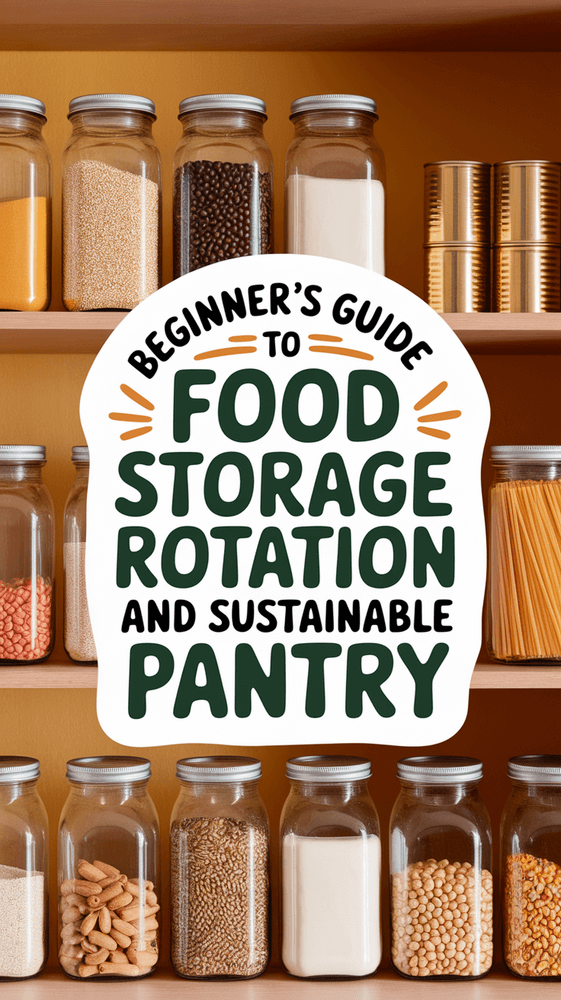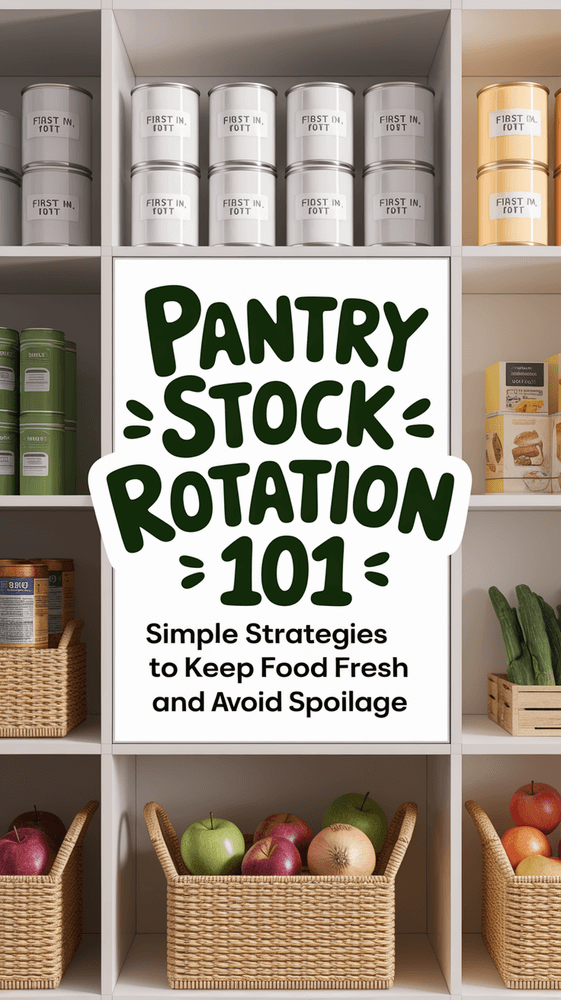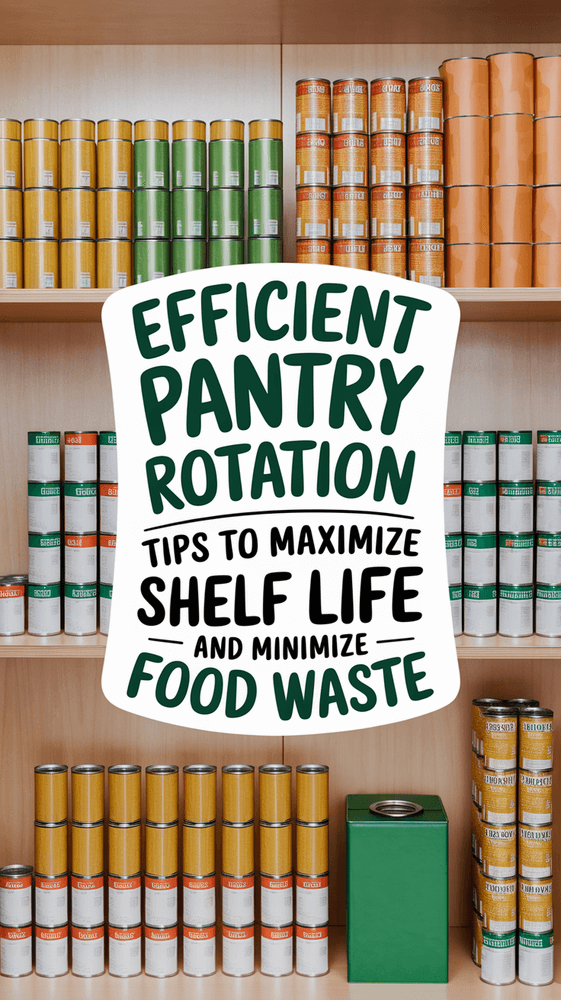It was about all the times I’d stood in my kitchen at dinnertime, staring into what looked like a full pantry but somehow feeling like I had nothing to cook. All those grocery trips where I’d buy ingredients I already had because I couldn’t see past the front row. The guilt every time I had to throw away something that went bad because it got lost in the shuffle. My mom always said waste not, want not, and here I was, wasting food while my bank account definitely felt the wanting.
Growing up, my abuela had this tiny pantry in her kitchen, but somehow she always knew exactly what was in there. She’d send me to grab something and I’d be like “there’s no way we have cinnamon,” but she’d just give me that look and tell me to check behind the rice. And sure enough, there it would be. She never had fancy containers or labels or any of the Instagram-worthy organization systems we see now. But she had something better: a system that actually worked.
After finding that prehistoric tomato can, I realized I wanted that same confidence in my own kitchen. Not the kind where you have to buy organizing products to feel good about yourself, but the real deal. The kind where you can actually cook with what you have instead of ordering takeout because you can’t figure out what to make with mystery ingredients buried in the back.
Here’s what I’ve learned: there’s nothing wrong with having a stocked pantry. The problem comes when you don’t know what you have, when things expire before you can use them, when you’re buying duplicates because you can’t see past the chaos. That’s not being prepared, that’s just expensive hoarding with good intentions.
The whole pantry rotation thing isn’t some complicated system that requires a degree in organization. It’s actually pretty simple once you understand the basic idea: old stuff gets used first, new stuff goes in back, and everything has its place where you can actually see it. My great-grandmother did this during the Depression not because she was into organization hacks, but because wasting food literally wasn’t an option. These days, it’s more about saving money and feeling like you have your life together, but the principle is exactly the same.
What really changed everything for me was realizing that an organized pantry isn’t just about looking neat. It’s about actually being able to cook the food you buy, using up ingredients before they go bad, and not having that sinking feeling when you open the door and have no clue what’s in there. It’s about walking into your kitchen and feeling capable instead of overwhelmed.
Getting Your Pantry Sorted: The Foundation
First things first: we’re organizing this chaos by category. Canned goods together, baking supplies together, snacks in their own little corner where they belong. Within each group, arrange everything by expiration date with the oldest stuff up front. Think of it like a little food parade where everyone knows their place in line.
I got these clear containers from Target, the ones everyone’s obsessing over on Instagram, and they’ve completely changed my relationship with my pantry. When you can actually see what you have, you stop buying three bottles of vanilla extract because you forgot you already had two hiding behind the flour. Been there, done that, learned my lesson the expensive way.
Here’s the golden rule my abuela taught me: new stuff goes in the back, old stuff stays in front. Every single time you grocery shop. No exceptions. I used to just shove new cans wherever they fit, but now I actually take the two seconds to put them behind the older ones. It sounds so basic, but this one habit will save you from finding mystery cans from 2019.
Monthly Pantry Check-Ins (Yes, Really)
Set yourself a reminder for the first Saturday of every month or whatever works for your schedule. Spend like 20 minutes going through everything, checking dates, tossing anything that’s gone bad, and making a list of what you need to restock. I do mine while I’m waiting for my coffee to brew: it’s become this weirdly meditative little ritual.
Please, for the love of all things sacred, label your bulk stuff! I learned this the hard way after buying quinoa in bulk and then having no clue when I bought it or when it might go bad. Get yourself a label maker or just use masking tape and a Sharpie. Date everything: when you bought it, when it expires, what it actually is if it’s not obvious.
- Before you hit “buy” on your next decor order, there’s a free 10-second step you should never skip: checking Rakuten (Ebates). I simply find the store name, click the deal, and shop like normal, and Rakuten sends me real cashback! Prices keep climbing everywhere, but this is one way to get a little back on the things you were going to purchase anyway. New members even get a $30 bonus when they spend $30 — which means your first order could pay you back instantly. Don’t miss out again. Click here to sign up and save money!
*Disclosure: This post includes affiliate links. I may earn a small commission if you join Rakuten through my link — but it doesn’t cost you anything extra. In fact, you’ll actually save more!
My sister thinks I’m being extra with all the labeling, but she’s the same person who once tried to make cookies with what she thought was powdered sugar but turned out to be cornstarch. Just saying.
Game-Changing Organization Tricks
Lazy Susans are seriously underrated. I put one of these rotating trays on my deep shelf, and now I can actually reach the stuff in the back without having to move half my pantry. It’s like having a little food carousel: spin it around and boom, there’s that jar of pickles you forgot about.
My cousin installed pull-out shelves in her pantry last year, and I’m jealous every time I visit her house. She can see everything at a glance, no more playing pantry Jenga to get to what she needs. If you’re handy or have a handy person in your life, this upgrade is totally worth the investment.
Here’s a weird trick I picked up from a home organization blog: use tension rods vertically to create dividers. Perfect for keeping your cutting boards, baking sheets, or those awkward flat things organized. Costs about five bucks and makes such a difference in how everything fits together.
Smart Meal Planning That Actually Works
Every month when I do my pantry check, I make a list of anything that’s expiring in the next couple months. Then I plan meals around using those ingredients first. It’s like a little cooking challenge: can I use up these random items before they go bad? Sometimes it leads to the most creative dinners.
I started doing “pantry meal Wednesdays” where I can only cook with what I already have at home. It’s forced me to get creative and actually use up all those random ingredients I bought for one recipe and then forgot about. Plus, it saves money and I feel like some kind of culinary wizard when I pull together a decent meal from seemingly random stuff.
If I make something and realize I’m not gonna eat all of it before it goes bad, straight to the freezer it goes. I’ve got these glass containers that are freezer-safe, and I label everything with what it is and when I made it. Future me is always grateful when I find a homemade meal waiting in the freezer on a busy Tuesday night.
Storage Basics That Actually Matter
Keep your pantry cool, dry, and away from that window if you have one. Heat and light are not your friends when it comes to keeping food fresh. I learned this after wondering why my olive oil kept going rancid – turns out the afternoon sun was hitting that shelf every day.
Never, and I mean never, store food directly on the floor. Learned this one from my mom who learned it from her mom. Pests, moisture, all kinds of grossness can happen down there. Even if you think your house is clean, just don’t risk it.
Invest in a vacuum sealer if you buy a lot of bulk items or freeze a lot of stuff. I got mine at Costco and it’s paid for itself already just in preventing freezer burn. Those freezer-safe labels are clutch too – trust me, three months from now you won’t remember if that frozen thing is soup or stew.
Keep Track of It All
I have this little whiteboard on the inside of my pantry door where I keep a running list of what I have and roughly how much. Sounds nerdy, but it’s saved me from buying duplicates so many times. When I use something up, I erase it. When I add something new, I write it down. Takes two seconds but saves me money and space.
The whole point of this isn’t to become some kind of pantry perfectionist – it’s just about not wasting food and money, and actually being able to find what you need when you need it. Start with whatever feels manageable for you. Maybe it’s just organizing one shelf this weekend, or doing that monthly check-in thing. Small changes add up, and honestly, there’s something really satisfying about having your food situation handled.
Plus, when your friends come over and you can actually make them something amazing with what you have on hand? That’s the real magic right there.
- Before buying anything online, check Rakuten (formerly Ebates) — either with the browser extension or directly on Rakuten.com. Just type in your store, click the current deal, and shop as usual. Every purchase earns you cashback that can be mailed to you or sent via PayPal. In today’s economy, even a few dollars back can turn into a Starbucks latte, McDonald’s fries for the kids, or a little treat you don’t have to budget for. If you’ve never used Rakuten before, you’re missing out on free money — and right now, you’ll even get a $30 bonus when you spend your first $30. Click here to sign up and stop letting your online orders steal from you. Click here to sign up and save money!
*Disclosure: This post includes affiliate links. I may earn a small commission if you join Rakuten through my link — but it doesn’t cost you anything extra. In fact, you’ll actually save more!



